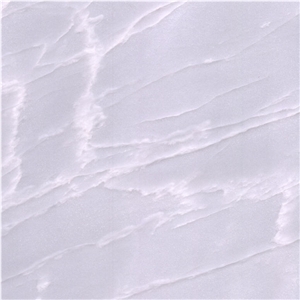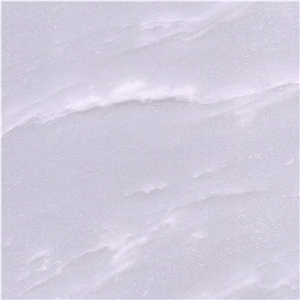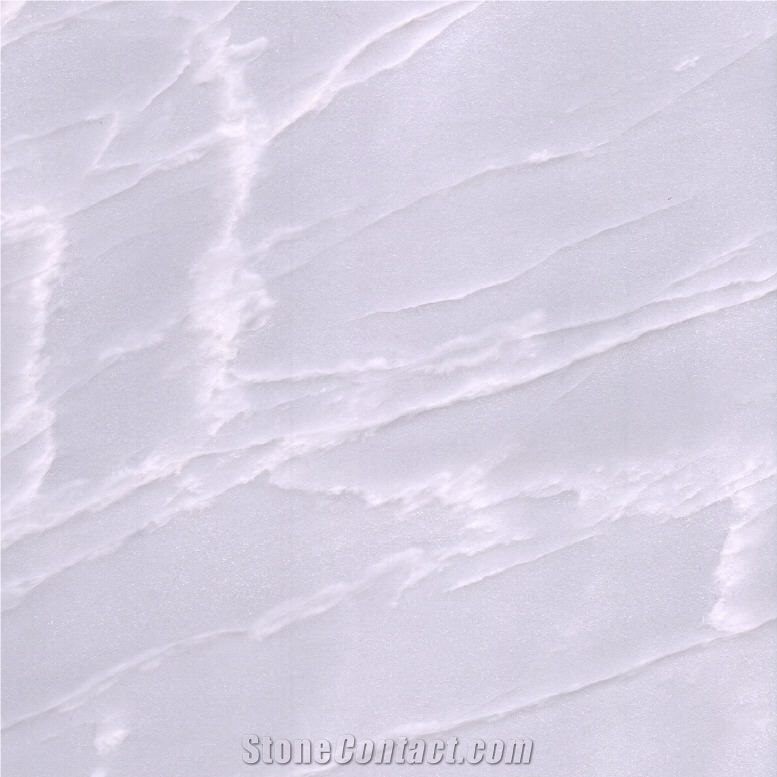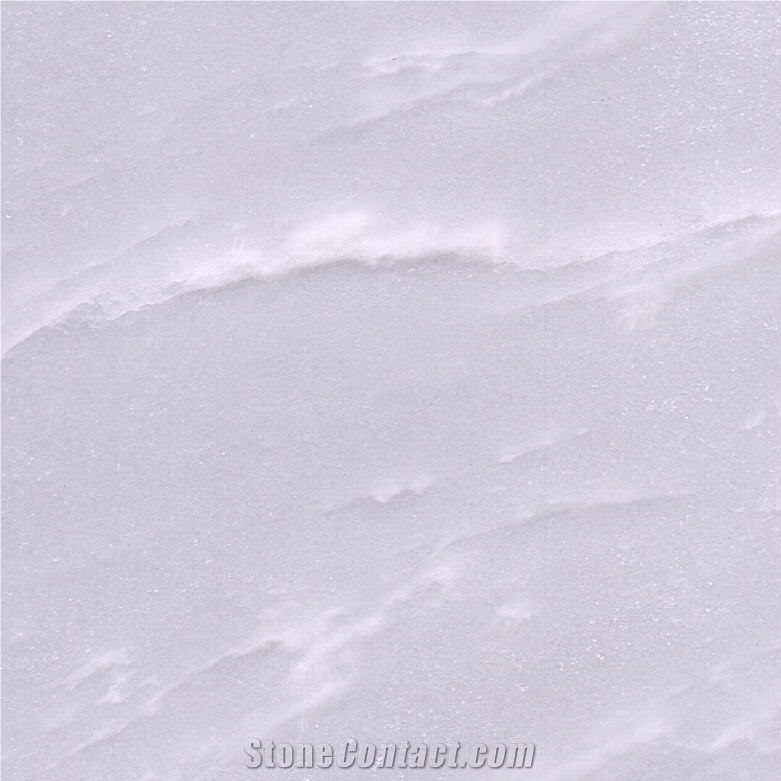Rhinoceros White Marble
 Namibia
(Otjiwarongo, Damara, Otjozondjupa Region )
Namibia
(Otjiwarongo, Damara, Otjozondjupa Region )
Rhinoceros White Marble is a kind of white marble quarried in Namibia. This stone is especially good for Wall and floor applications, countertops, mosaic, fountains, pool and wall capping, stairs, window sills and other design projects. It also called Bianco Rhino Marble,Rhino White Marble,Mystery White Marble,Namib White Marble,White Rhino Marble, in China stone market:犀牛白(Xīniú bái) . Rhinoceros White Marble can be processed into Polished, Sawn Cut, Sanded, Rockfaced, Sandblasted, Tumbled and so on.

Is Rhinoceros White Marble hard to sculpt?

How do I keep mold out of a Rhinoceros White Marble shower?

Is dolomite the same as Rhinoceros White Marble?

Can Namibia's Rhinoceros White Marble be used exterior applications in cold climates?

How did sculptors get Rhinoceros White Marble so smooth?

Are there color variations of Namibia's Rhinoceros White Marble?

Can I cut the meat on Rhinoceros White Marble?

How are Rhinoceros White Marble statues cleaned?

Can Namibia's Rhinoceros White Marble be used outdoors?

Does Rhinoceros White Marble absorb water?

How do I clean Rhinoceros White Marble busts?

What are the disadvantages of Rhinoceros White Marble countertops?

Are Rhinoceros White Marble sculptures fragile?

What is better honed or polished Rhinoceros White Marble for floor?

Does Rhinoceros White Marble floor scratch easily?

Can I put food on Rhinoceros White Marble?

When should I throw away a Rhinoceros White Marble cutting board?

What is the coefficient of friction of Chiseled Namibia's Rhinoceros White Marble tiles?

Is Rhinoceros White Marble or granite better for sculptures?

What is the absorption rate of Rhinoceros White Marble?

How long does it take to make a Rhinoceros White Marble sculpture with a CNC machine?

Do I need to seal honed Rhinoceros White Marble?

Why is Rhinoceros White Marble used for sculptures?

Can Namibia's Rhinoceros White Marble be used in landscaping?

Can I put hot pots on Rhinoceros White Marble kitchen countertop?

Can I cut chicken on Rhinoceros White Marble?

How do I protect a Rhinoceros White Marble statue?

Does urine damage Rhinoceros White Marble?

Can Namibia's Rhinoceros White Marble be used in a living room?

Is Rhinoceros White Marble OK to use in a shower?

What is the average density of Namibia's Rhinoceros White Marble?

What tools are used to sculpt Rhinoceros White Marble?

Can I carve Rhinoceros White Marble with a Dremel?

How often do I need to seal a Rhinoceros White Marble shower?

Can bacteria grow on Rhinoceros White Marble?

Is Namibia's Rhinoceros White Marble an expensive stone?
-

Fujian Province Ruifengyuan Industrial Co., Ltd.
 China
China
 Verified Supplier is for prove company authenticity,including business license,trade license and effective office space,to enhance buyers' trust to suppliers and their products, reducing communication costs.
Verified Supplier is for prove company authenticity,including business license,trade license and effective office space,to enhance buyers' trust to suppliers and their products, reducing communication costs.
Contact Supplier
-

Fujian Province Ruifengyuan Industrial Co., Ltd.
 China
China
 Verified Supplier is for prove company authenticity,including business license,trade license and effective office space,to enhance buyers' trust to suppliers and their products, reducing communication costs.
Verified Supplier is for prove company authenticity,including business license,trade license and effective office space,to enhance buyers' trust to suppliers and their products, reducing communication costs.
Contact Supplier
-

 Italy
Italy
 4YRDiamond members are premium members on platform, providing members with comprehensive approach to promoting their products, increasing products exposure and investment return to maximize.
4YRDiamond members are premium members on platform, providing members with comprehensive approach to promoting their products, increasing products exposure and investment return to maximize.
 Verified Supplier is for prove company authenticity,including business license,trade license and effective office space,to enhance buyers' trust to suppliers and their products, reducing communication costs.
Verified Supplier is for prove company authenticity,including business license,trade license and effective office space,to enhance buyers' trust to suppliers and their products, reducing communication costs.
Contact Supplier
-

Xiamen Asian Stone Imp.& Exp. Co.,Ltd.
 China
China
 13YRDiamond members are premium members on platform, providing members with comprehensive approach to promoting their products, increasing products exposure and investment return to maximize.
13YRDiamond members are premium members on platform, providing members with comprehensive approach to promoting their products, increasing products exposure and investment return to maximize.
 Verified Supplier is for prove company authenticity,including business license,trade license and effective office space,to enhance buyers' trust to suppliers and their products, reducing communication costs.
Verified Supplier is for prove company authenticity,including business license,trade license and effective office space,to enhance buyers' trust to suppliers and their products, reducing communication costs.
Contact Supplier
-

 Italy
Italy
 13YRDiamond members are premium members on platform, providing members with comprehensive approach to promoting their products, increasing products exposure and investment return to maximize.
13YRDiamond members are premium members on platform, providing members with comprehensive approach to promoting their products, increasing products exposure and investment return to maximize.
 Verified Supplier is for prove company authenticity,including business license,trade license and effective office space,to enhance buyers' trust to suppliers and their products, reducing communication costs.
Verified Supplier is for prove company authenticity,including business license,trade license and effective office space,to enhance buyers' trust to suppliers and their products, reducing communication costs.
Contact Supplier
-

Fujian Province Ruifengyuan Industrial Co., Ltd.
 China
China
 Verified Supplier is for prove company authenticity,including business license,trade license and effective office space,to enhance buyers' trust to suppliers and their products, reducing communication costs.
Verified Supplier is for prove company authenticity,including business license,trade license and effective office space,to enhance buyers' trust to suppliers and their products, reducing communication costs.
Contact Supplier
-

Xiamen Global Stone Imp. & Exp. Co.,Ltd.
 China
China
 5YRDiamond members are premium members on platform, providing members with comprehensive approach to promoting their products, increasing products exposure and investment return to maximize.
5YRDiamond members are premium members on platform, providing members with comprehensive approach to promoting their products, increasing products exposure and investment return to maximize.
 Verified Supplier is for prove company authenticity,including business license,trade license and effective office space,to enhance buyers' trust to suppliers and their products, reducing communication costs.
Verified Supplier is for prove company authenticity,including business license,trade license and effective office space,to enhance buyers' trust to suppliers and their products, reducing communication costs.
Contact Supplier
-

 China
China
 8YRDiamond members are premium members on platform, providing members with comprehensive approach to promoting their products, increasing products exposure and investment return to maximize.
8YRDiamond members are premium members on platform, providing members with comprehensive approach to promoting their products, increasing products exposure and investment return to maximize.
 Verified Supplier is for prove company authenticity,including business license,trade license and effective office space,to enhance buyers' trust to suppliers and their products, reducing communication costs.
Verified Supplier is for prove company authenticity,including business license,trade license and effective office space,to enhance buyers' trust to suppliers and their products, reducing communication costs.
Contact Supplier
-

 China
China
 8YRDiamond members are premium members on platform, providing members with comprehensive approach to promoting their products, increasing products exposure and investment return to maximize.
8YRDiamond members are premium members on platform, providing members with comprehensive approach to promoting their products, increasing products exposure and investment return to maximize.
 Verified Supplier is for prove company authenticity,including business license,trade license and effective office space,to enhance buyers' trust to suppliers and their products, reducing communication costs.
Verified Supplier is for prove company authenticity,including business license,trade license and effective office space,to enhance buyers' trust to suppliers and their products, reducing communication costs.
Contact Supplier
-

Fujian Province Ruifengyuan Industrial Co., Ltd.
 China
China
 Verified Supplier is for prove company authenticity,including business license,trade license and effective office space,to enhance buyers' trust to suppliers and their products, reducing communication costs.
Verified Supplier is for prove company authenticity,including business license,trade license and effective office space,to enhance buyers' trust to suppliers and their products, reducing communication costs.
Contact Supplier
The request includes: 1. surface finished, size 2. quantity required
 Geo***Wrote:
Geo***Wrote:
I want to buy Rhinoceros White or Namibia White Marble tiles Looking for 2350 Sq meters size 30cmx60cmx1cm thickness. One side polished









